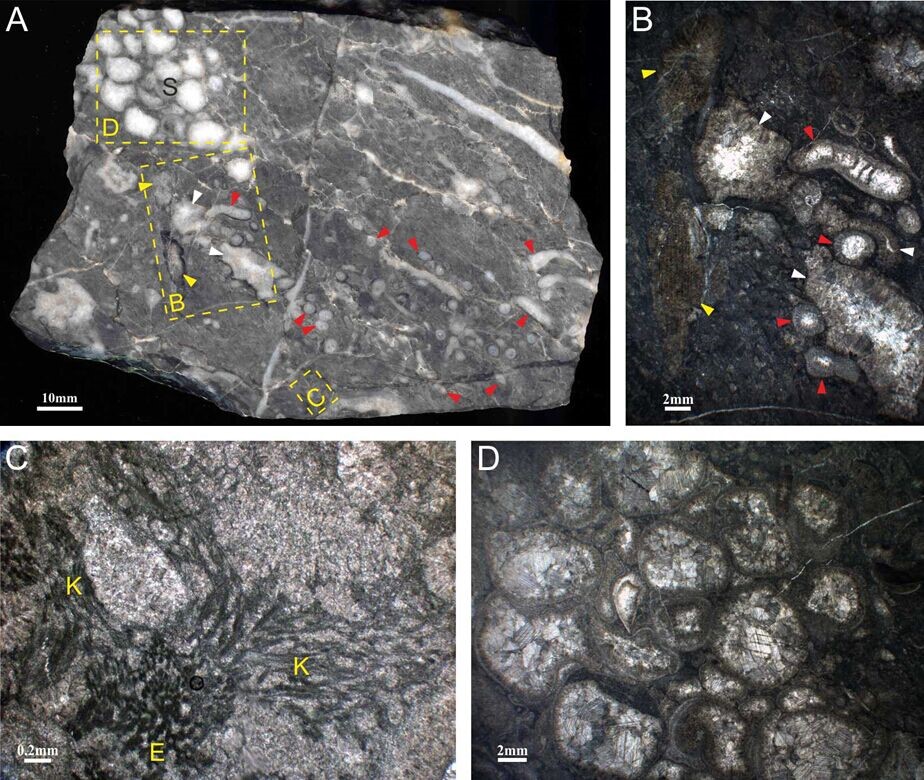
Biota and microfacies of the reef. A) Polished slab of sphinctozoan-coral-microbial boundstone. B-D) Thin- sections of rectangles marked in A. White triangles— cavities; yellow triangles—Streptelasma; red triangles—Palaeophyllum; S— sphinctozoan (Corymbospongia); E—Epiphyton; K—Kordephyton.
Sphinctozoan (chambered) sponges were important reef-builders and common cryptobionts during the mid-late Permian and mid-late Triassic. These hypercalcified sponges can be traced from the Cambrian, but it was once thought that they were restricted to level-bottom communities until the Middle Permian. Compare to the Permian and Triassic, there were just sporadic and limited reports of reef-building sphinctozoans (multi-chambered sponges) in the Early Paleozoic.
Recently, Dr. LI Qijian from Nanjing Institute of Geology and Palaeontology, Chinese Academy of Sciences and his colleagues Prof. LI Yue and Prof. Wolfgang Kiessling discover an oldest sphinctozoan-coral-microbial reef? from the Upper Sanqushan Formation (late Katian) at Wu’ai in Zhejiang, southeast China, which is also the first report of Ordovician sphinctozoans from the South China. The huge reef (about 120m thick) is mainly constructed by calcimicrobes (Kordephyton, Renalcis and Epiphyton) with a suite of calcareous algae (mostly red alga) and accessory metazoans (sphinctozoans and rugose corals). The elongated stromatactis cavities (centimeter-scale) filled with cement pervade in the non-laminated microbial boundstone. Bio- and litho-facies in this area as well as the characteristics of the microbialite show that the reef developed in a deeper subtidal and stressful setting that was unfavorable for most metazoan builders. In contrast to the high-energy stromatolite-sphinctozoan reefs in the Late Silurian, our case represents a low-energy community, indicating that the first reef-building sphinctozoan (Corymbospongia) might have been originated from relatively deep environment on seamounts of a back-arc basin during the Late Ordovician.
The research article was published in: Li Qijian, Li Yue & Kiessling Wolfgang, 2015. The first sphinctozoan-bearing reef from an Ordovician back-arc basin.Facies, 61 (3): available online. (DOI: 10.1007/s10347-015-0444-6)

